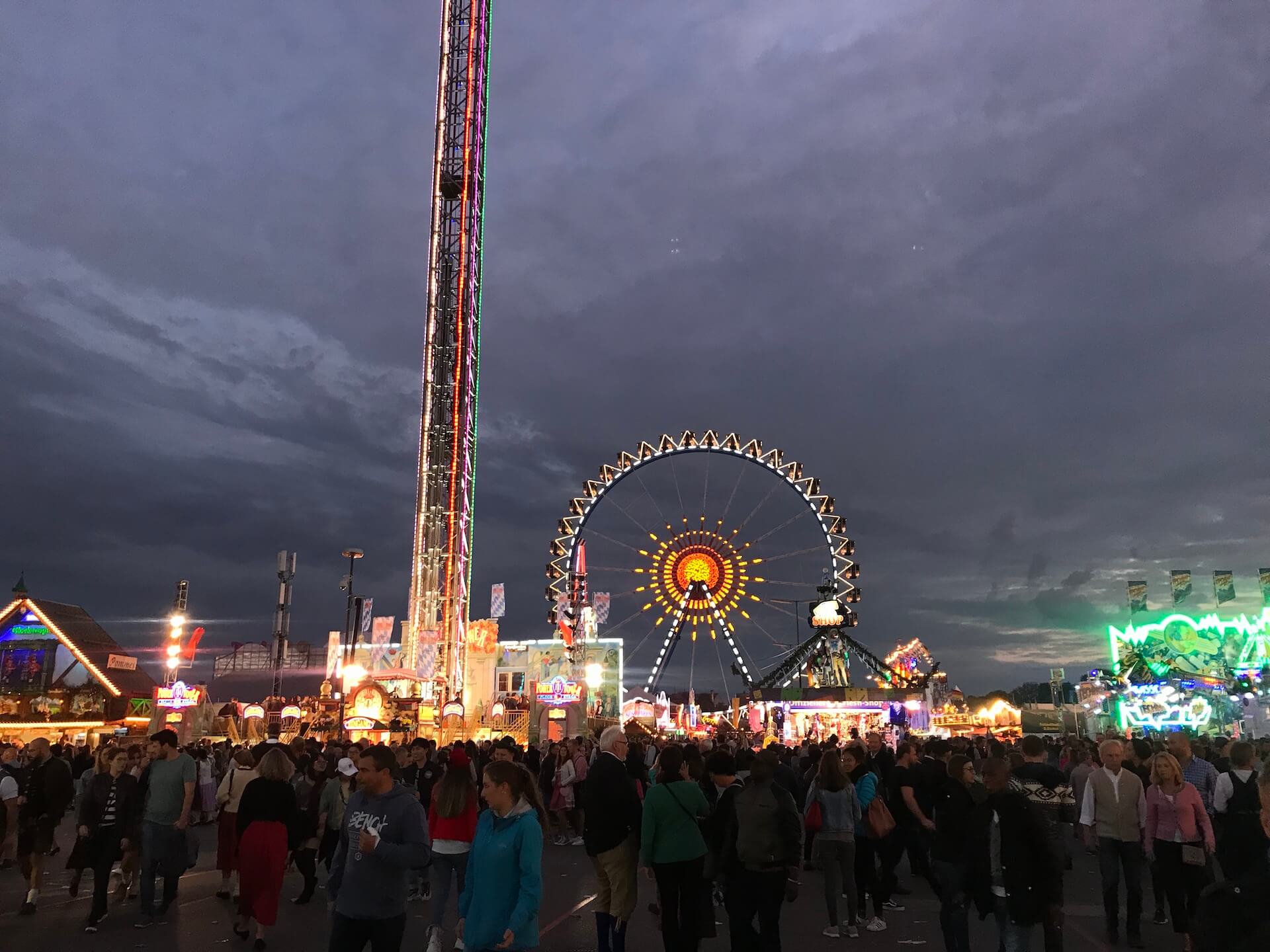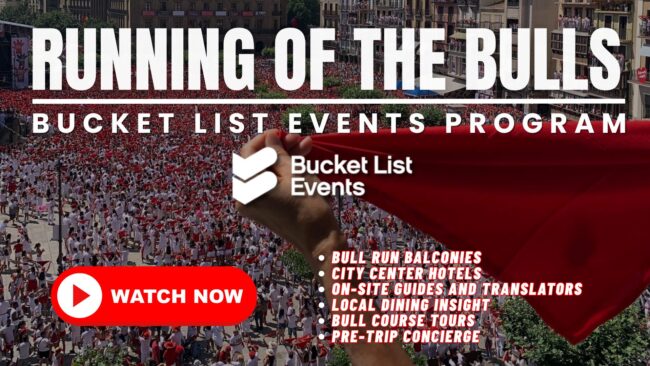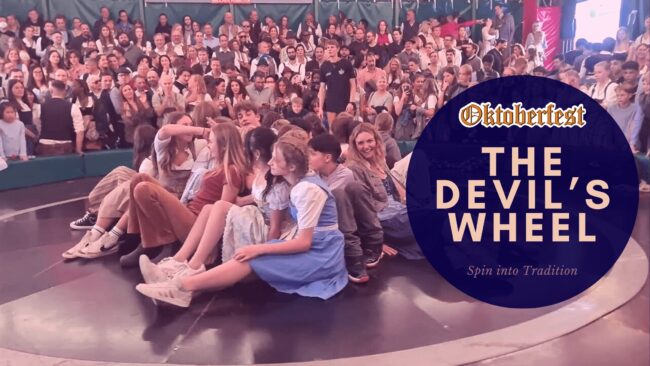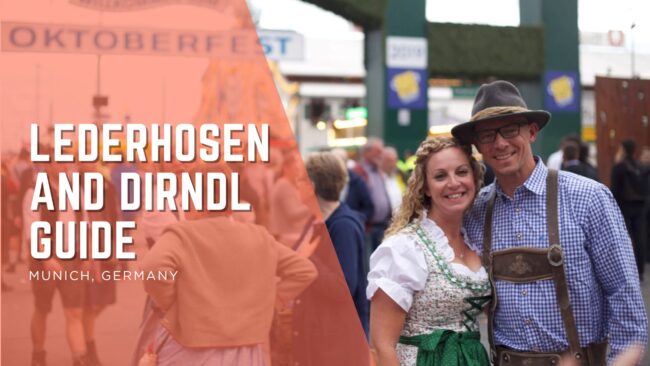An Arc Of Joy: The Oktoberfest 2025 Vision

2024 Winner, photo by Moritz Roder
Beloved as the world’s largest Volksfest (volk = folk), Oktoberfest enchants millions of locals and tourists year-round to revel in the tradition, spectacles, and history that pulses with Bavarian pride. Underlying that spirit is a simple art form: the humble poster.
Visible across every venue and throughout Germany and beyond, a singular image emerges each year as a poster that distills the magic of Oktoberfest onto ink and paper. This poster then becomes the catalyst for the festival’s art, changing into pins, stamps, and, if you could believe it, other posters.

Winning poster by Amiera Harithas and Dinah-Charles Francis, photo by Moritz Roder
The 2025 competition has come to a close, in which “113 designs were uploaded, [where] 74 of which made it into the public vote” (Oktoberfest, 2025). The jury decided on the winner, leaving us, the public, with our masterpiece for 2025.
This year’s winner depicts a joyous German maiden lifting high the cherished symbols of the festival: a shining brass tuba, a perfectly golden-baked pretzel, and a frothing stein of German beer. Above her, the twin towers of the Frauenkirche stand in silent benediction, and behind her, the Bavarian sky stretches in its signature pastel blue . Written in traditional German font, the poster prominently features a Kellnerin (a beer-serving waitress) dressed in a Dirndl. Designed to appeal to the common folk, it serves as a global invitation, spreading the festive spirit of Oktoberfest far and wide.
The Art of Oktoberfest: From Weddings to Iconic Posters
As the festival evolved, so too did the way it was advertised. Early promotional materials prominently featured galloping horses, a nod to the event’s origins. But as the beer tents and amusement rides grew in importance, so did the need for a fresh artistic approach. By 1952, the City of Munich’s Department of Labor and Economic Affairs (RAW) launched an annual competition, inviting artists to capture the festival’s essence in a single image. The winning design becomes the official face of that year’s Oktoberfest, plastered across Munich and beyond.
The process is a competitive affair. Hundreds of artists submit their designs, which are then voted on by Oktoberfest enthusiasts to narrow the selection down to the top 30. From there, a jury of experts selects the ultimate winner, awarding both prestige and a 2,500-euro prize. And once printed, these posters don’t just disappear after the festivities end, they become collectors items, with some vintage editions fetching up to $265 on the second-hand market!
Common Oktoberfest Poster Themes
Over the past 60+ years, Oktoberfest posters have evolved while maintaining a core set of symbols that define Bavarian culture. From monks and beer steins to music and carnival rides, each element tells a story about the festival’s deep-rooted history and ever-changing artistic interpretations. Here is a quick list of some of six of the most re-occurring symbols that you might see in some other posters:
1. Monks: The Original Brewers
Before Oktoberfest became a global beer celebration, Bavarian monks were the original brewmasters, perfecting beer recipes in monasteries. Many posters pay tribute to this legacy (of Munich) by depicting robed monks enjoying or serving beer, symbolizing both the festival’s historical roots and the craftsmanship behind Bavarian brewing.
2. Beer: The Heart of Oktoberfest
It wouldn’t be an Oktoberfest poster without beer! Whether shown in massive overflowing steins or as golden rivers flowing from barrels, beer remains the focal point of nearly every design. While earlier posters emphasized the communal aspect of drinking, contemporary posters often take a more playful or more sticker-esque approach to illustrating beer’s role in the festival.
3. Dirndls: Bavarian Elegance and Festivity
Dirndls, the traditional dresses worn by women at Oktoberfest, have become a visual shorthand for the festival itself. Posters frequently feature dirndl-clad women holding steins, dancing, or welcoming visitors.
4. The Carnival: A Celebration Beyond Beer
Though beer is the main attraction, Oktoberfest is also home to thrilling carnival rides, parades, and fairground games. Some posters incorporate Ferris wheels, roller coasters, and amusement park lights to highlight the joy and excitement that go beyond the beer tents.
5. Trout: A Surprising Oktoberfest Staple
Though beer and sausages dominate the conversation, grilled fish, especially trout and mackerel, is a traditional Oktoberfest delicacy. Some vintage posters feature fish on skewers, subtly nodding to the diverse food offerings at the festival.
6. Pretzels: The Perfect Pairing
The golden, twisted pretzel is one of the most recognizable Oktoberfest (and German) foods and frequently appears in posters. Whether held in a hand next to a beer stein or displayed as a larger-than-life visual element, pretzels symbolize the warmth, hospitality, and rich culinary traditions of the festival.
A Royal Celebration Turned Global Tradition: The Origins of Oktoberfest
Deeply embedded in the city’s identity, Oktoberfest is quintessentially Münchner. The city’s name traces back to the Old High German term Munichen, meaning “Home of the Monks,”a tribute to its monastic origins. Founded around 750 CE by the Benedictine monastery at Tegernsee, Munich remains steeped in its rich history.
At its core, Oktoberfest traces back to a single wedding – one that has been celebrated for over two centuries. The first Oktoberfest took place in Munich in 1810, marking the marriage of Prince Ludwig and Princess Therese von Sachsen Hildburghausen. The wedding ultimately culminated in a thrilling horse race. The celebration was such a success that it became an annual tradition, with each passing year expanding the festivities. Today, Oktoberfest has evolved into the world’s largest festival, blending Bavarian tradition with international appeal. More than six million visitors from across the globe gather each year to partake in the festivities, proving that what began as a royal wedding celebration has become a truly global phenomenon.













